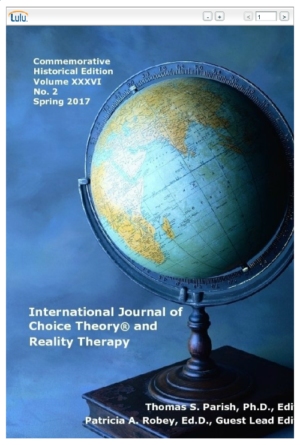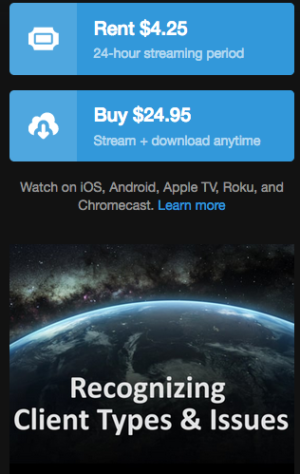
We are currently working with a new structure with William Glasser International, where WGI is the umbrella organization made up of Member Organizations. This now places the responsibility for training in the hands of the Member Organizations. The Glasser Canada Board is pleased to announce that the requirement for a Masters’ degree has been removed. The following are the new guidelines for become a member of the Senior Faculty in Canada. Any questions should be addressed to: president@glassercanada.ca
Guidelines for Becoming a Senior Instructor in Canada
Prerequisites: The minimum requirements for beginning the process to become Senior Faculty is that you have taught at least five (5) Basic Trainings, only one of which may be co-facilitated.
There are two phases to this process:
Phase 1:
Step 1. To complete the Application and make payment in the amount of $750 payable to Glasser Canada. Once this is received, a set of questions will be sent to you to be answered in a 40 -minute video.
Step 2. You then prepare a 40-minute video recording, and have it reviewed by a current dues-paying and active senior WGI faculty member who is teaching Advanced Trainings in Canada (You will be asked to name this Senior Faculty Member on your Application Form.) This is similar to the role of the Faculty Program Consultant in the Basic Intensive Process.
This video should explain at least three ways that you perceive Advanced Training to be different from Basic Training and answer the questions that were sent to you with the preliminary application. We also ask for a teaching piece that you do in your basic week. We are looking for competency with the ideas and facilitating the growth of the participants.
Once this video has been reviewed by the Canadian Senior Faculty Member who supports you in your application for Senior Status, we ask you to submit the video for review to the President of Glasser Canada, Maureen McIntosh and Chair of Professional Development, Lynn Sumida. This will be reviewed in a timely manner and you will be notified of the next steps.
Phase 2.
Step 1: to create a good quality video of two 20-minute role-plays with one voluntary and one involuntary client followed by a self- evaluation of the role-plays to include the questions provided. This video will once again be submitted to Maureen McIntosh and Lynn Sumida for review and approval.
Upon approval you will be notified by e-mail and Glasser Canada will issue a certificate and mail it to you. You will also be registered as a Senior Faculty Member with William Glasser International.
The Glasser Canada Application:
Glasser Canada Process for becoming Senior Faculty
The Questions to be included in your 40-minute teaching video.
1. How is Reality Therapy different from other counseling approaches?
2. What does counseling, coaching, teaching, leading with Choice Theory mean to you?
3. How do you manage and encourage people who are reluctant to role-play during intensive training?
4. How would you approach a school or agency that is mostly concerned with addressing discipline problems?
5. How do you use your strengths to enhance and maximize learning for participants in WGI training? Give specific examples.
6. List two or three ways you have improved your training as a result of feedback received from participants or colleagues.
7. How will your advanced intensive training be different from your basic intensive training?
8. What would you like to see as the future of WGI and its member organizations?
9. As a senior faculty member, what do you see as your contribution to WGI and to Glasser Canada.
III. Senior Faculty Video Review Process
Video record two role-play sessions with two different clients. One session should be with a voluntary client. The other should demonstrate lead management with an involuntary client.
Video Evaluation Part I: At the end of each demonstration, provide a verbal overview of your thoughts regarding the session you have just completed. You might demonstrate what you would discuss if you were using the session in a training.
For example:
- Describe the counseling/ helping environment and the counseling/helping relationship.
- What were the goals/your intention for the session?
- What did the client want? What basic need(s) were reflected in the client’s want? How do
you know this? - Did you teach the client any Choice Theory? If so, what did you teach? If not, discuss how you might have incorporated teaching into your demonstration if you were to do it again.
- How did your understanding of Choice Theory assist in the Role Play (RT process)?
- What effective questions were asked and why were they effective?
- If you could do the role play again, what would you want to do differently?
- If this was a management role play, explain what lead management techniques you used
during this role play.
- What CT/RT/LM/QS concepts could be taught from this role play?
Video Evaluation Part II: Write an evaluation of each session. Be specific, using the exact time of your intervention in the session so that the person reviewing the video can easily see the intervention you are referring to. Address the following:
- From a choice theory perspective, how do you understand what is happening with the person with whom you are working?
- Based on the practice of choice theory and reality therapy, what techniques/skills did you use when working with this client? Give examples from the video. Use language relevant to choice theory/reality therapy (e.g. Creating environment, identifying wants, working with total behavior, facilitating self-evaluation, total behavior, developing plans
3. What was your intention behind the use of your skills in your session? What did you do well? What would you like to improve? What feedback, if any, did you get from the client?
Be specific in your commentary. For example:
At 4:36 in your video I asked the client what she hoped to get from counseling. My intention was to access the client’s quality world and to get a sense of what goals the client hoped to address as a result of our time together.
Provide alternate direction you might have taken. For example:
At 12:00 the client seemed to be resistant to taking action. I might have asked the client to reflect on her total behavior and tell me what was getting in the way for her
OR
If I could do the session again, I would look for opportunities to help the client self-evaluate her thinking. For example, at 9:12, client said she felt like she was a failure and had no friends. I might have asked something like “Let’s look at that statement. Tell me about a time in your life when things were going well for you. What was different about that time?
Video Evaluation Part III: Imagine you are using your videos for training purposes. What would you teach from them? Provide options for counselors, managers, and school personnel.




